Watch the new video by Kilian Bron Fuego here.
Kilian and his production team of Pierre Henni, Pierre Dupont, Mathieu Ruffray and JB Liautard has been producing masterpieces for the last couple of years traveling the globe showcasing unique places to ride a bike.
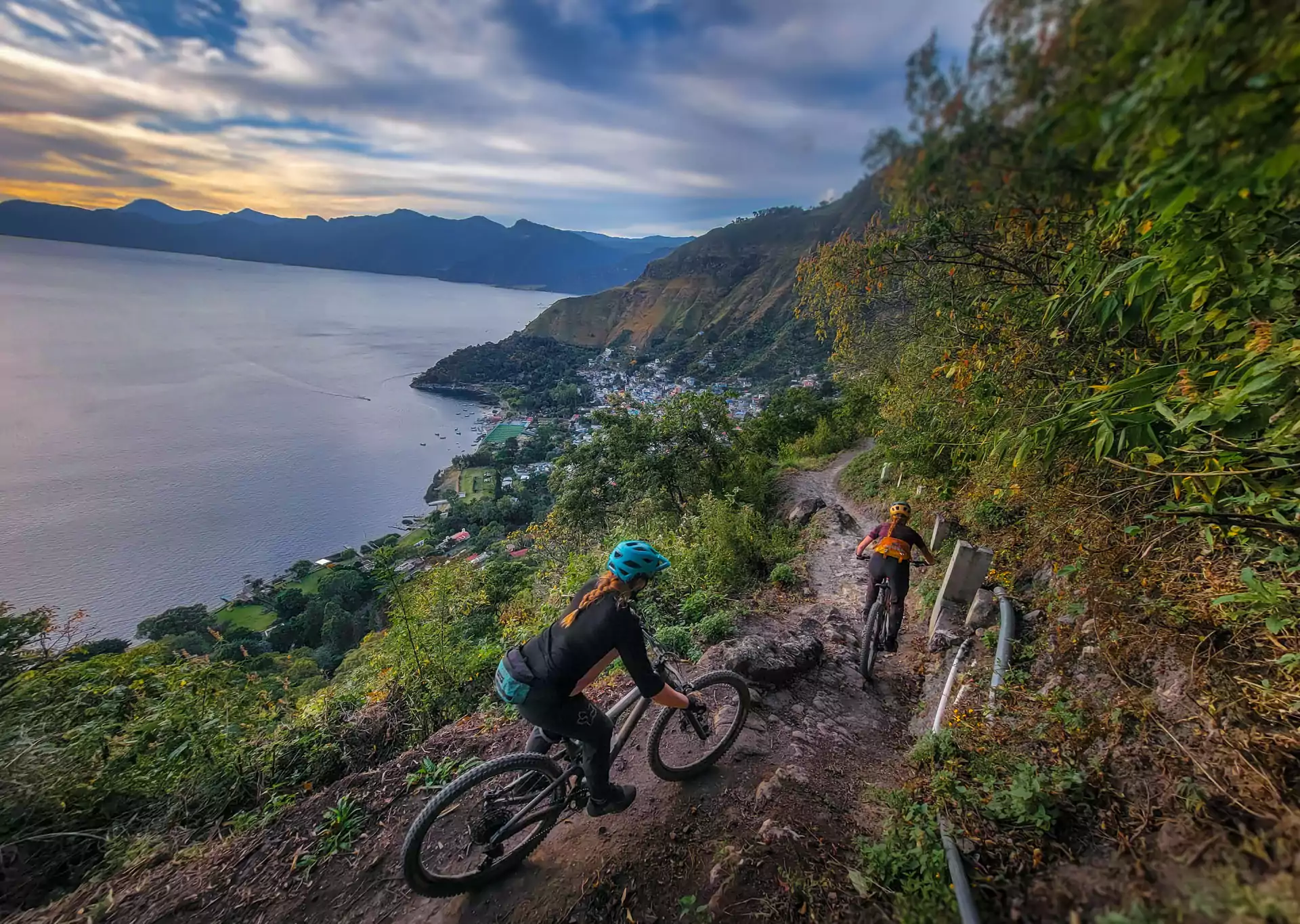
JOIN OUR NEXT BIG TRIP

Day of the Dead Enduro
Join us for a weeklong celebration of riding and local culture coinciding with el día de los muertos.
October 27 – Nov 3, 2025
When Kilian Bron called us an described his idea to bike the active Fuego Volcano with us in Guatemala we were beyond excited – but we knew making his dream come true would not be an easy task.
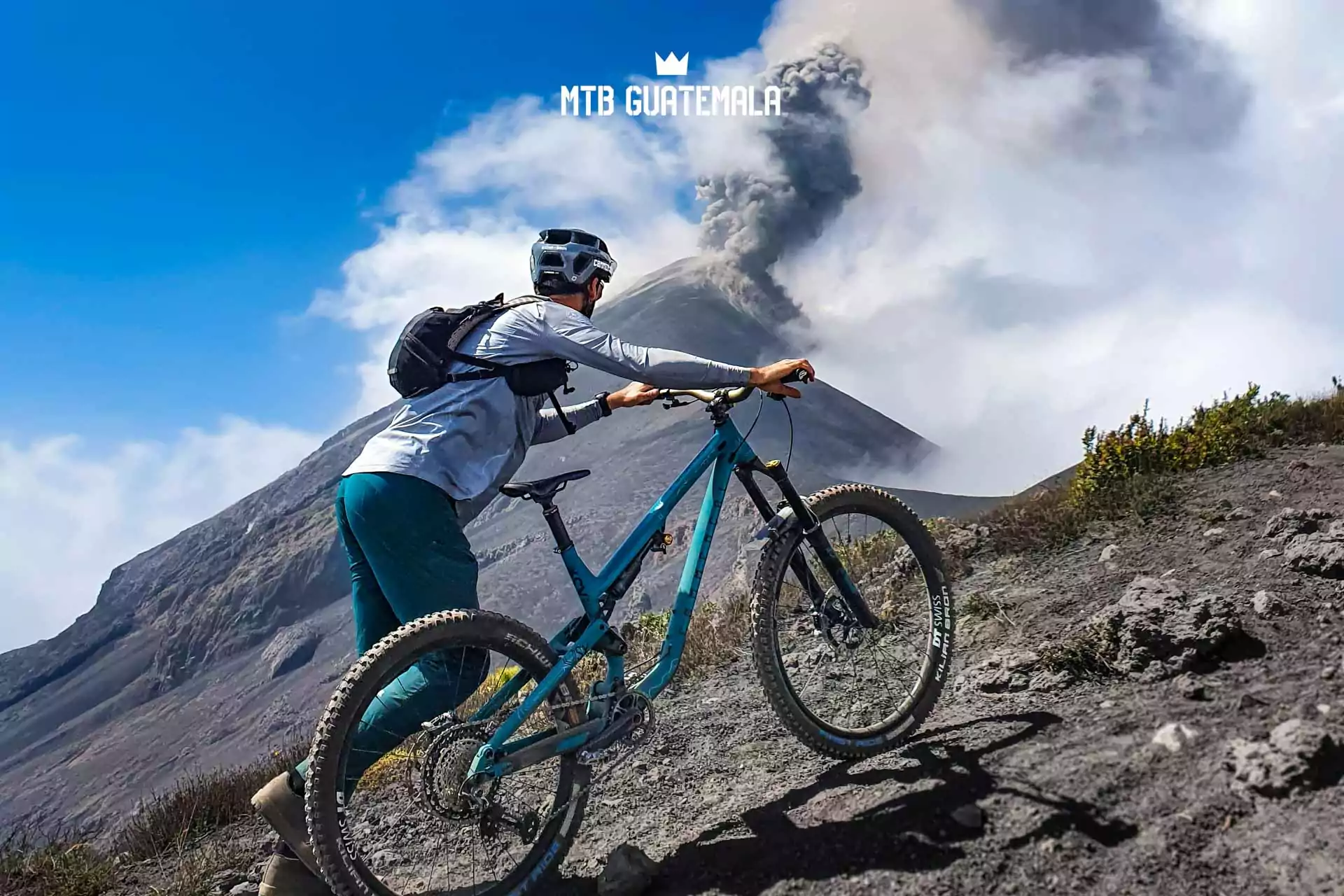
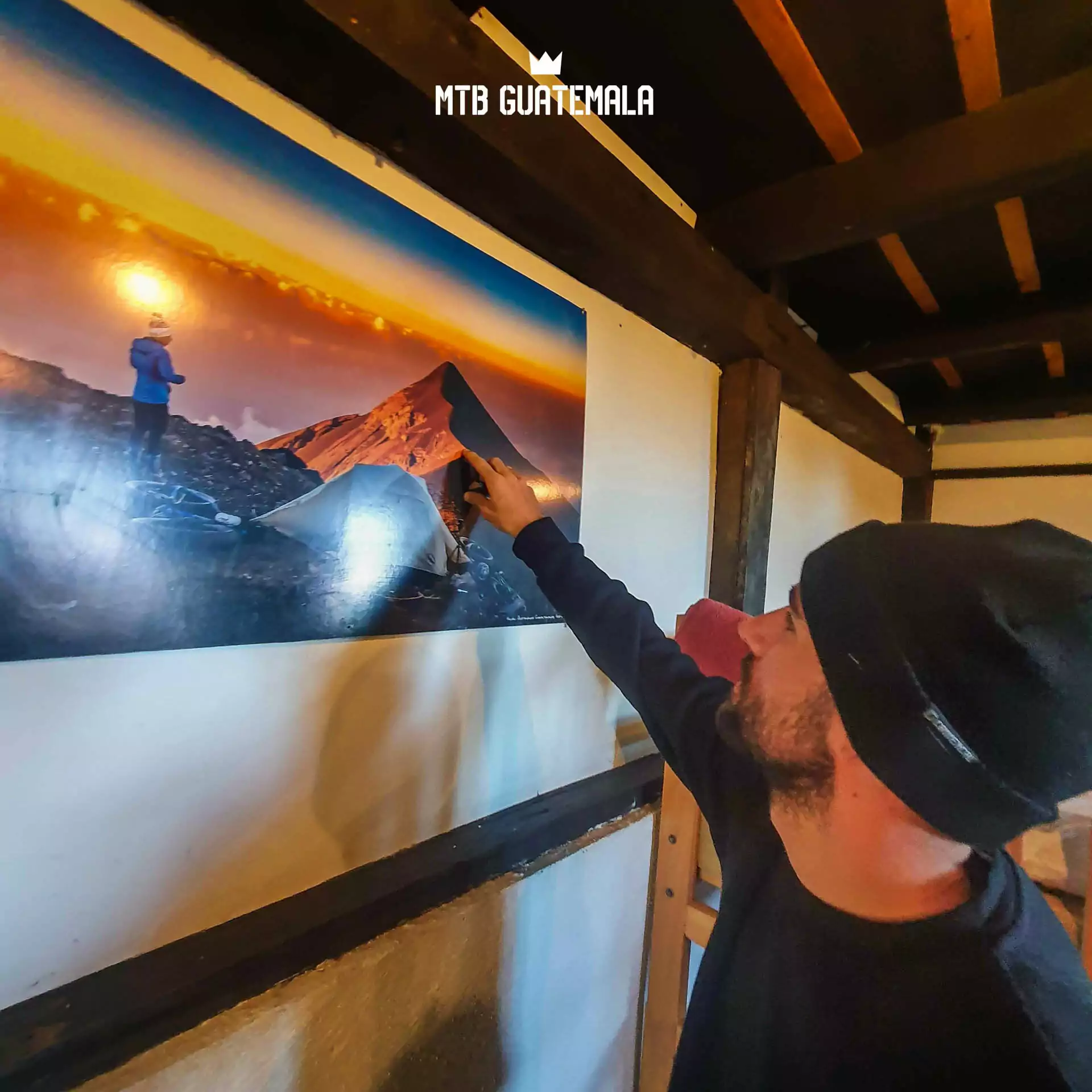
Every idea starts with a dream
Fuego is the most active volcano in Guatemala and one of the most active in the world with regular eruptions every 10-15 minutes. On top of that, Fuego is high, it’s summit rising to near 4000m ~13,000ft. The mountain is like a giant landslide, constantly getting moved and sliding with debris.
“If we could time the descent in between the eruptions and survive the falling rock and ash, we might just be able to make Kilian Bron’s dream on Fuego come true. “
Part 1 – Tecpán
We picked Kilian Bron and his team up from the airport late at night, Jet-lagged and blurry-eyed from the flight from France, and drove them to our mountain cabin in Tecpán for the night. Located at 2700m, our cabin would be the base for the next few days of exploring and acclimatizing .
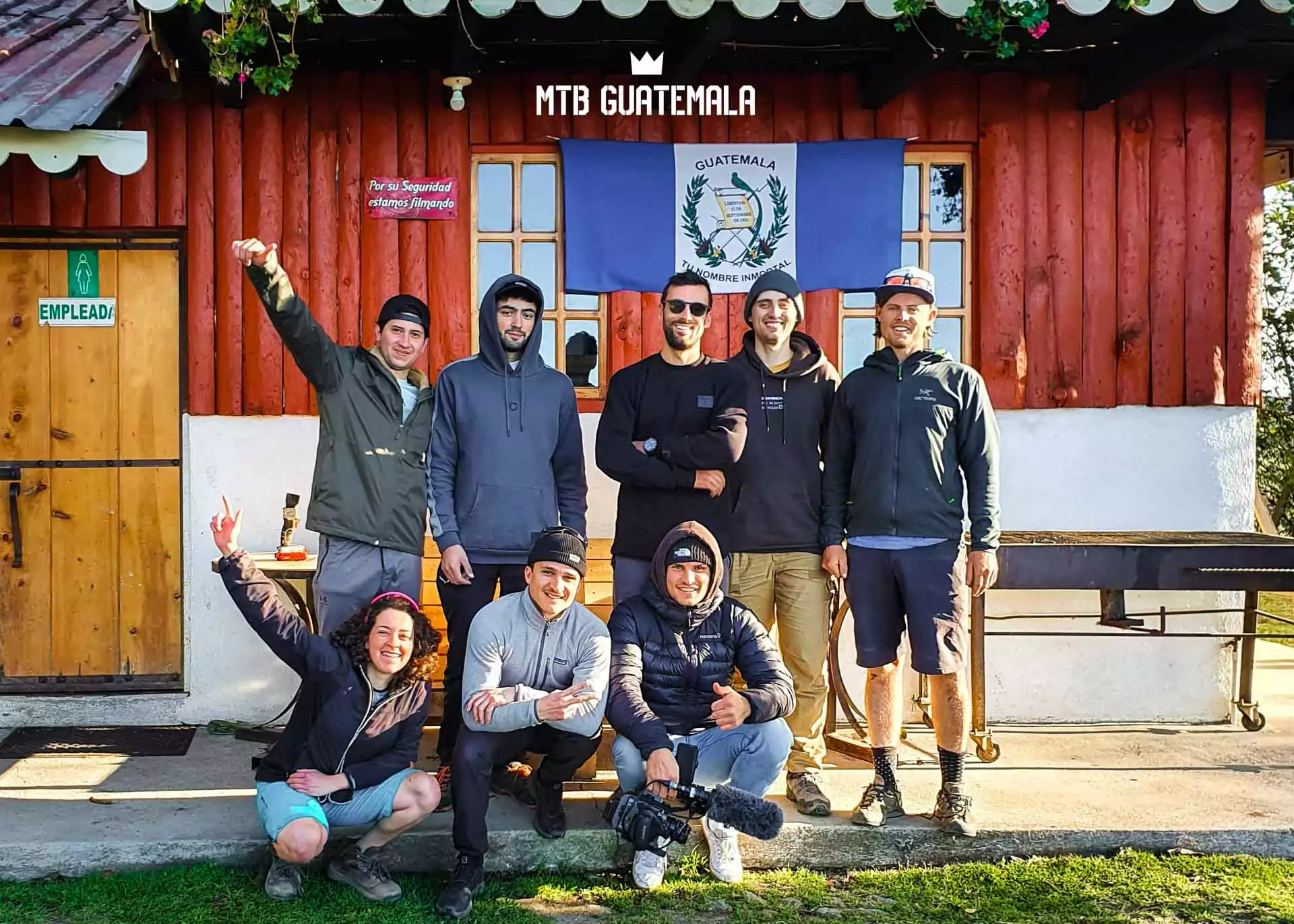
Tecpán is home of the former Mayan City of Iximche, there is Mayan history everywhere. It is a living Mayan metropolis, surrounded by many sacred sites. Most of the locals still speak the Mayan language of Kaqchikel and live off the land much like they did thousands of years ago. Tecpán is also home to some great mountain biking.
Our first day with Kilian, we shuttled up to the summit of Cerro Tecpán at 3200m. At this altitude you can still see Guatemala’s virgin forest and towering cypress trees. The weather is cold, we are up in the clouds. We warmed up on some of our favorite trails on the mountain, descending down old steep chutes that locals use to climb up and cut wood.
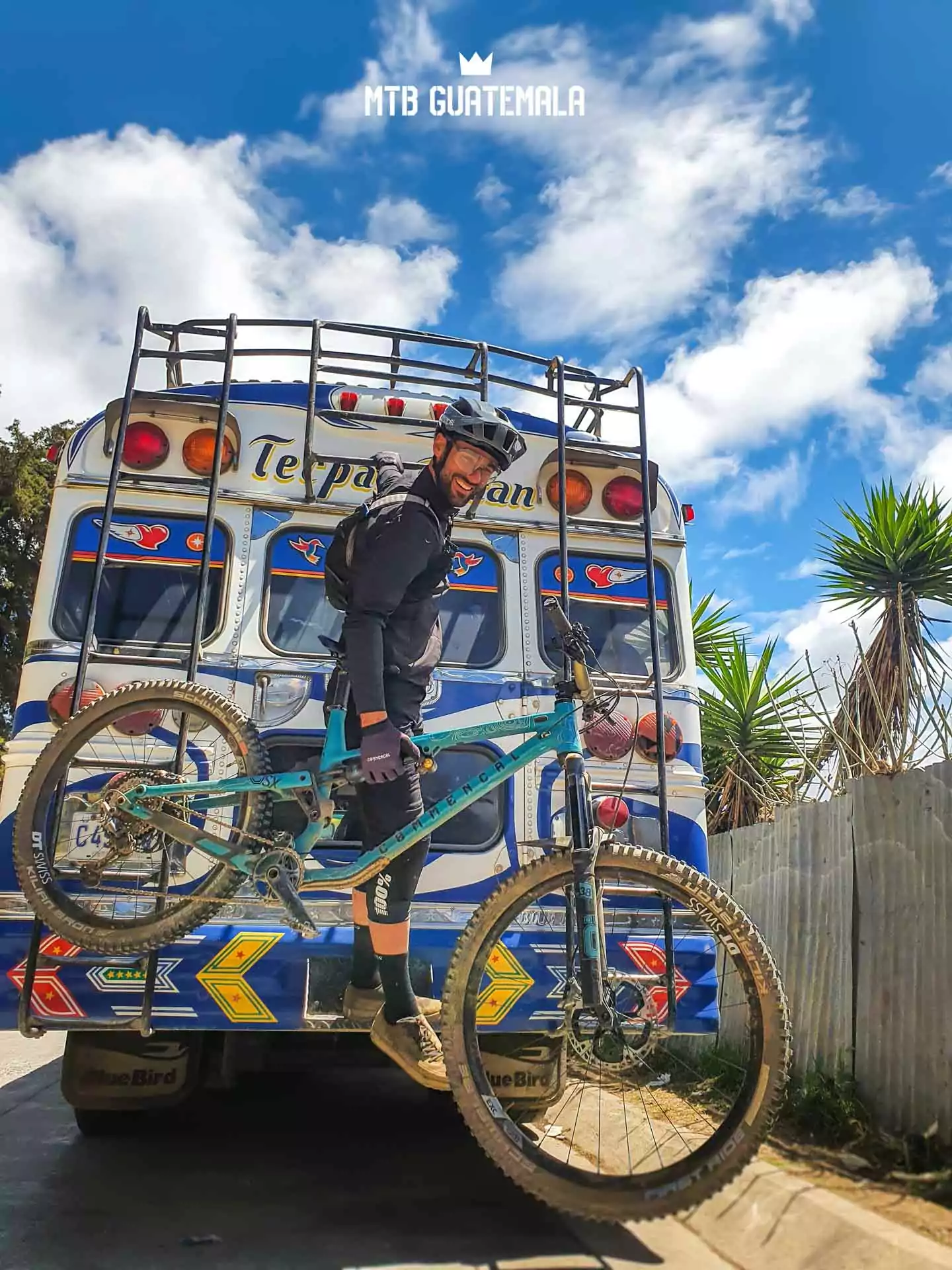
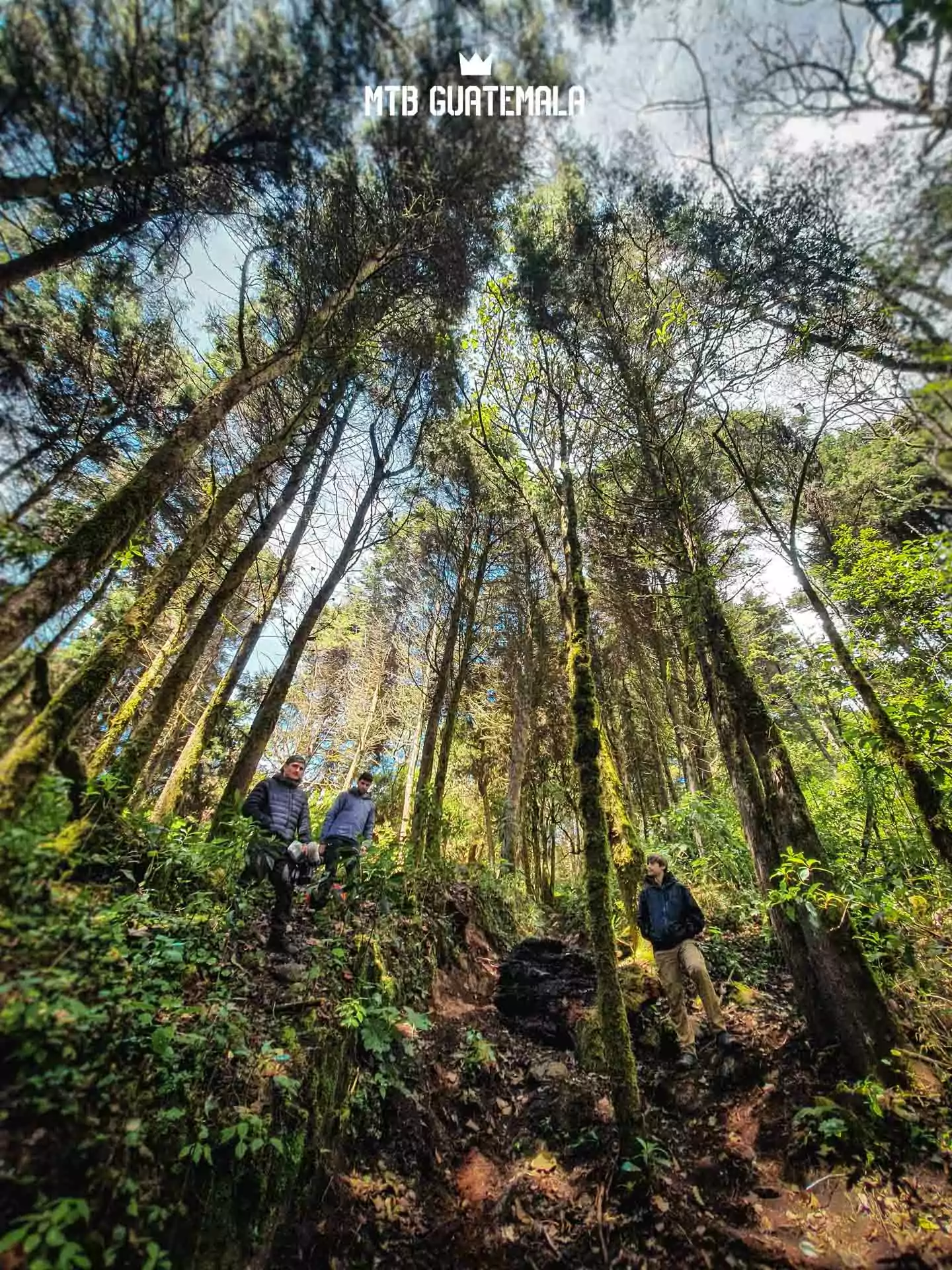
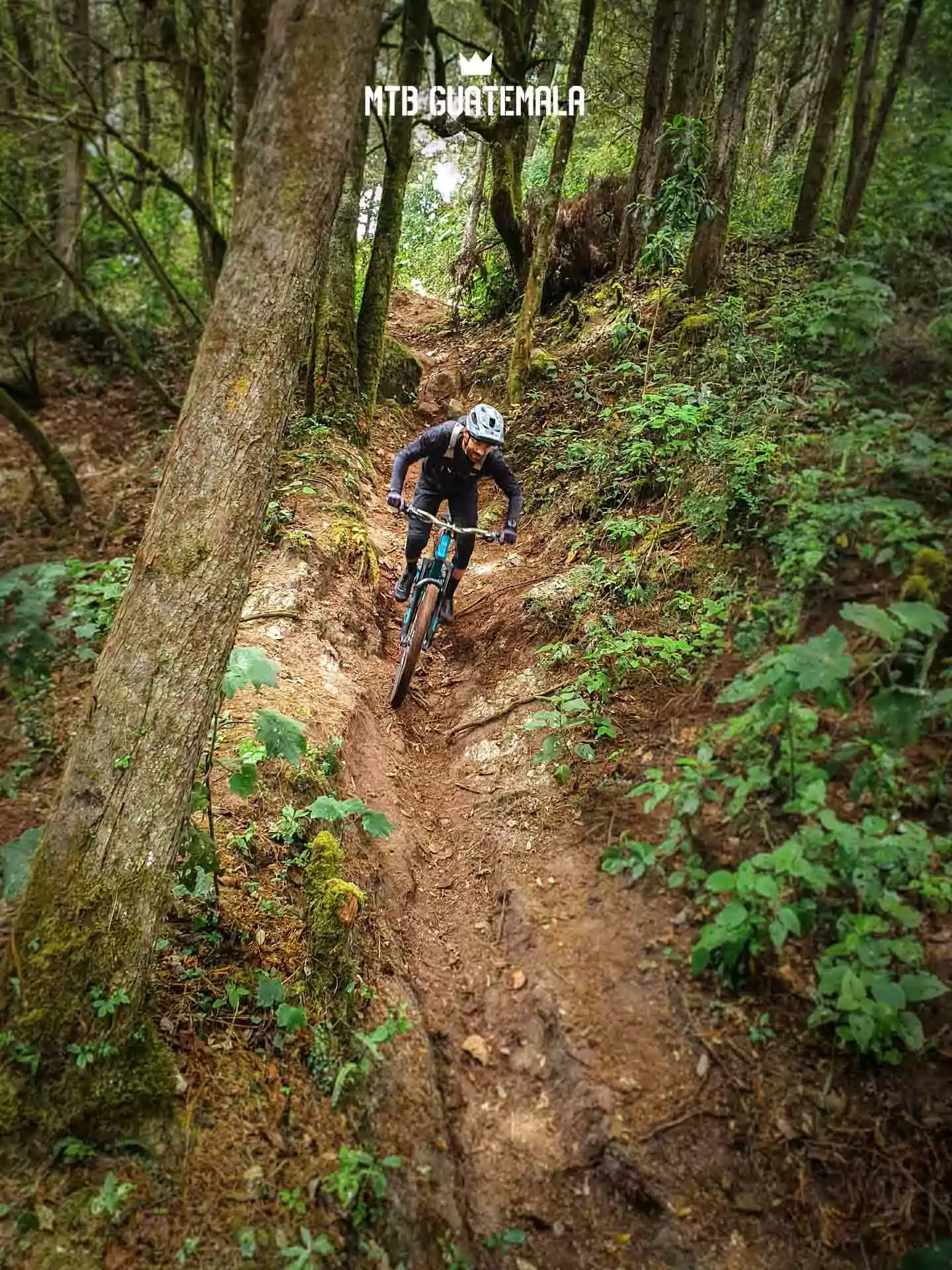
Part 2 – Patzún
We told Kilian about a nearby cave that would be perfect for some lighted photo shoots. About halfway between Tecpán and Lake Atitlán lies the town of Patzún. Home of deep canyons and steep slopes, locals here earn a living mining sand from the cliffs with tunnels that they excavate by hand.
The workers were friendly and had no problem with us biking in their home made mine. “Just don’t go near the right side” they said “its starting to collapse.“
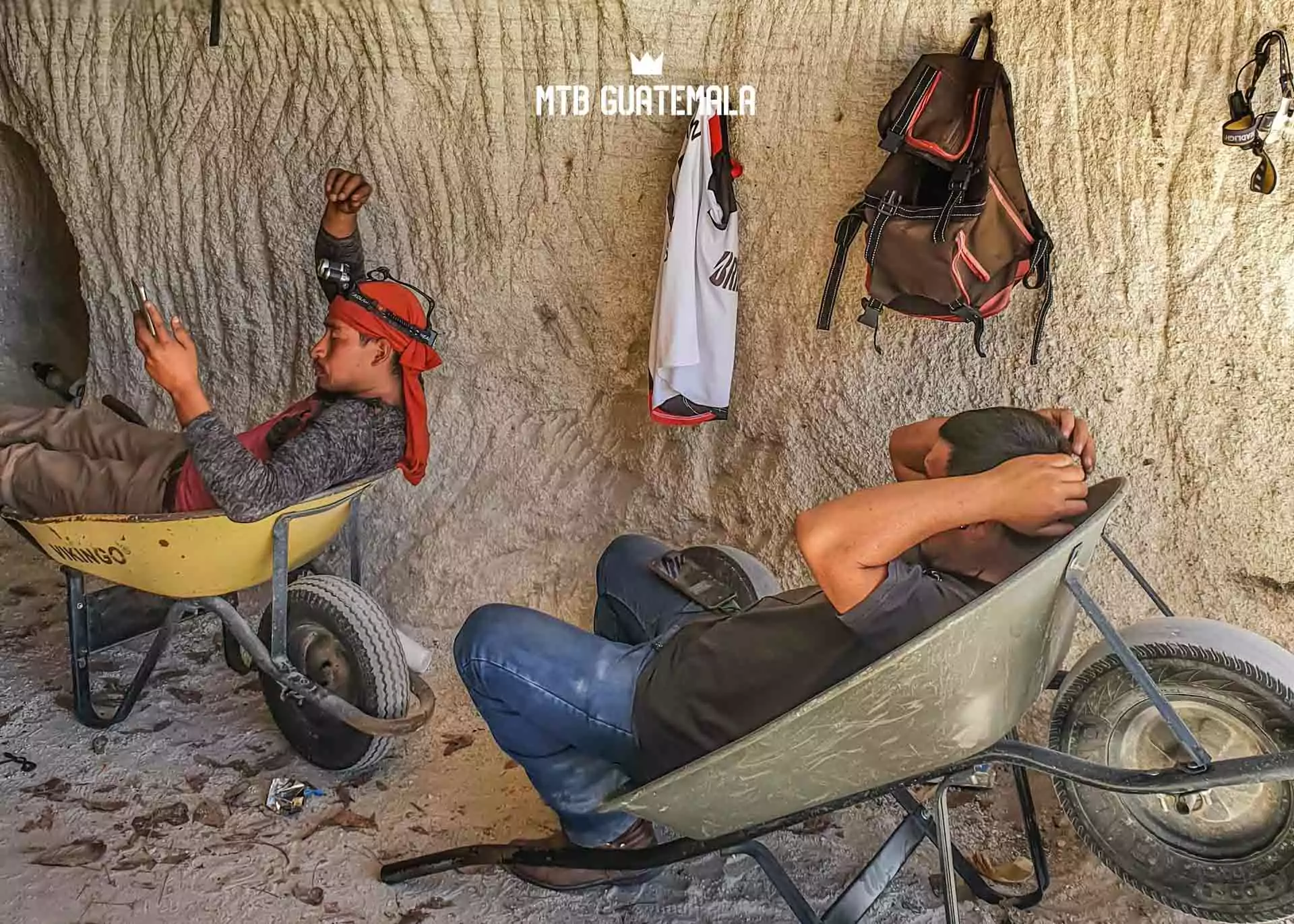
No one knows exactly when the sand mines will collapse, but they do so quite often. The way to Lake Atitlán is blocked by enormous landslides from collapsed mines along the road.





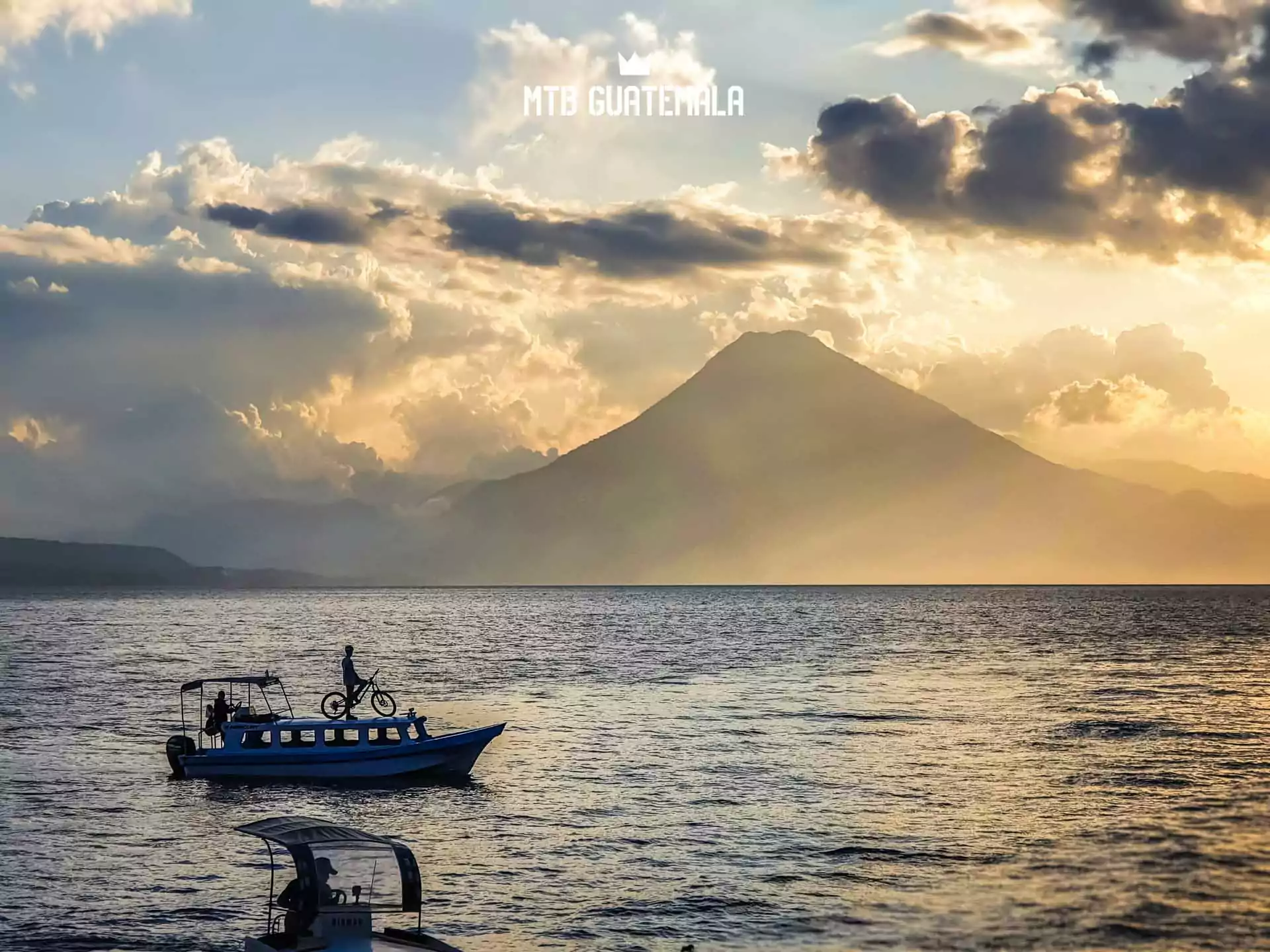
Part 3 Lake Atitlán
Much more than a just lake, Lake Aitlán is a region home to quaint Mayan towns that cling to cliffs, many of which can only be accessed only by boat. Lake Atitlán is a time capsule of Mayan living from before the great war. Local’s here still wear traditional, hand woven clothes, each weave representing a different ethic group at the Lake, where they speak 4 languages.
It didn’t take long before the kids got wind of what Kilian Bron and his film crew were up to and we had a crowd of spectactors.
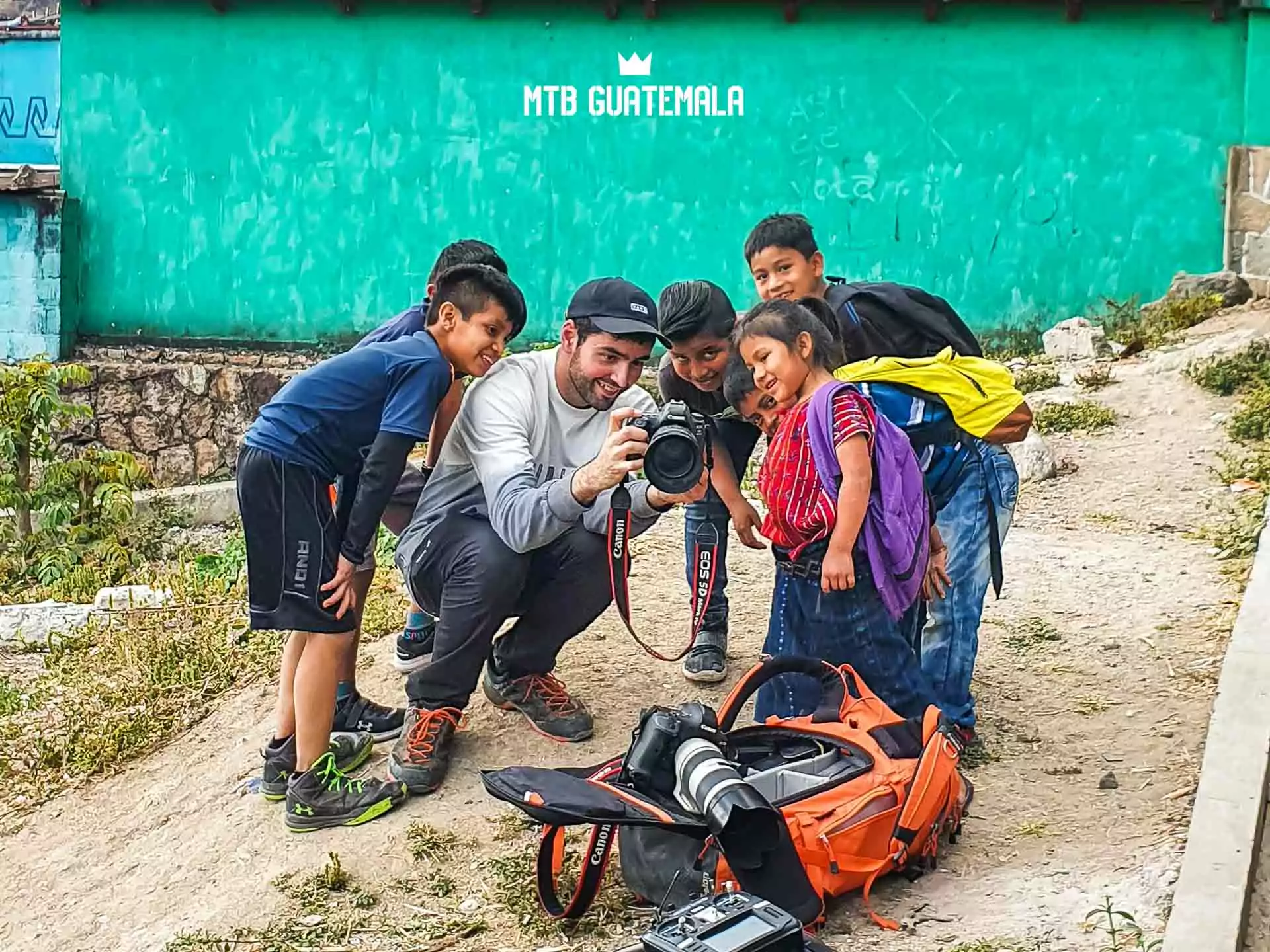





Dropping down steep steps in Santa Catarina Palopó. For each run the film crew would coordinate with radios the precise timing and POV drone shots.
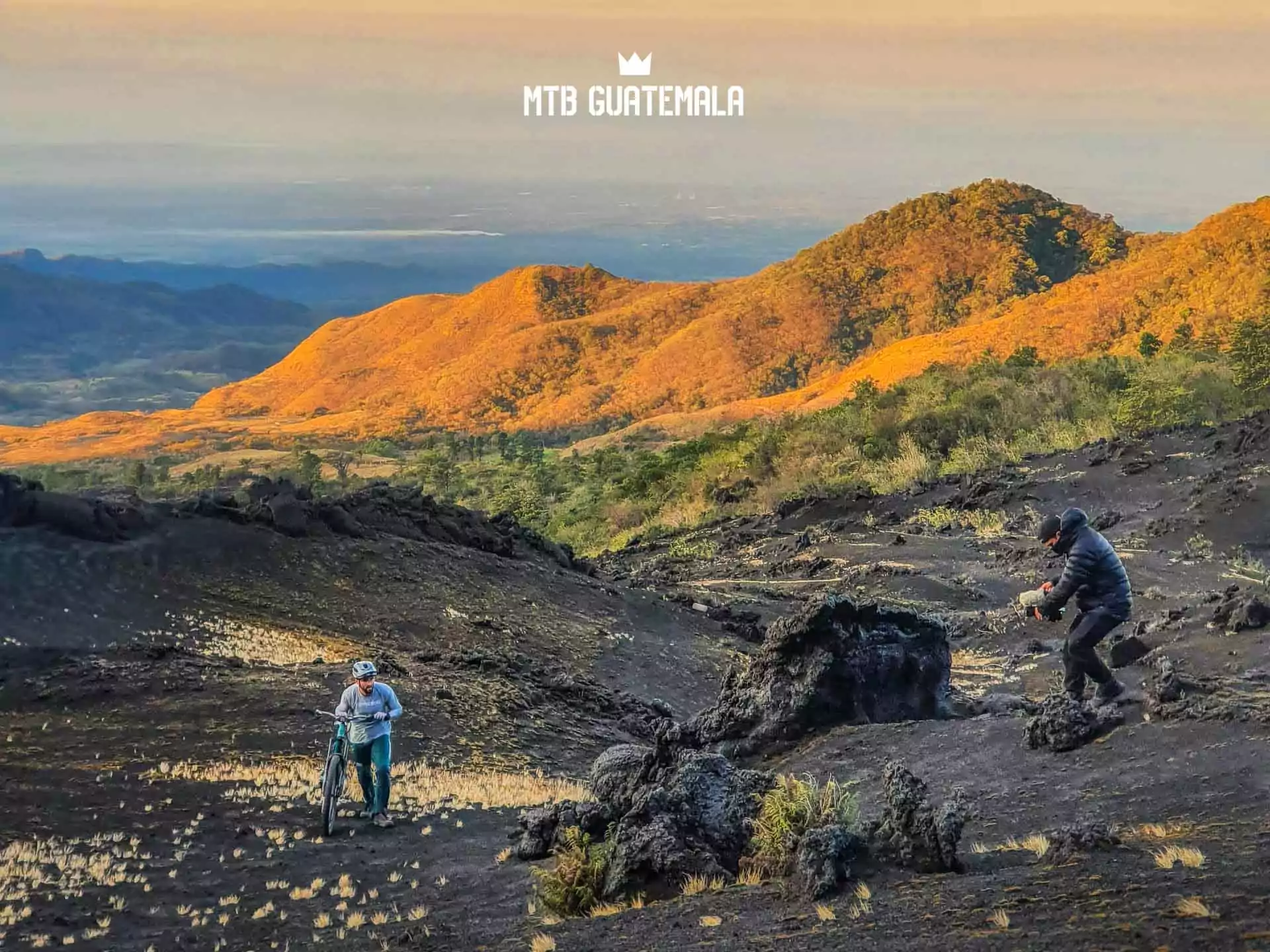
Part 4: Volcán de Pacaya
We would waste no time at the Lake. The following day, we crossed the country, stopping briefly at our the base in Tecpán to pack our expedition equipment for the Pacaya Volcano. We would spend the next couple of days camping out on the lava fields and scoping lines.
Pacaya is Guatemala’s second most active volcano, a lava dome or volcanic complex with multiple summits. Part of what makes Pacaya interesting is that openings can form pretty much anywhere in the region spilling rivers of lava unexpectedly.
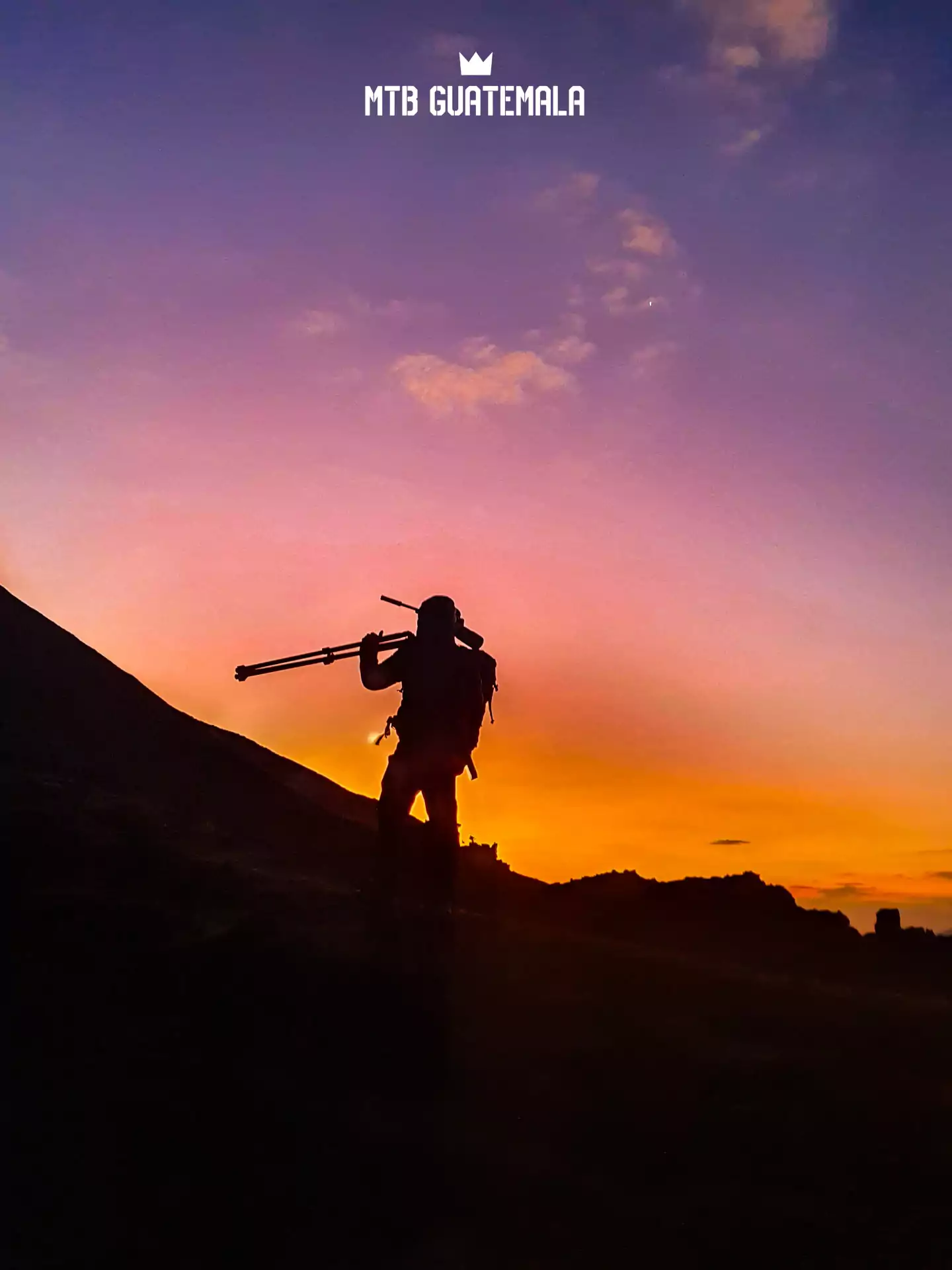
Pacaya is a freerider’s dream. On the volcano, we hiked lines at sunrise with Kilian, scoping lines and connecting the ash flows, which descend nearly 1500m to sea level.
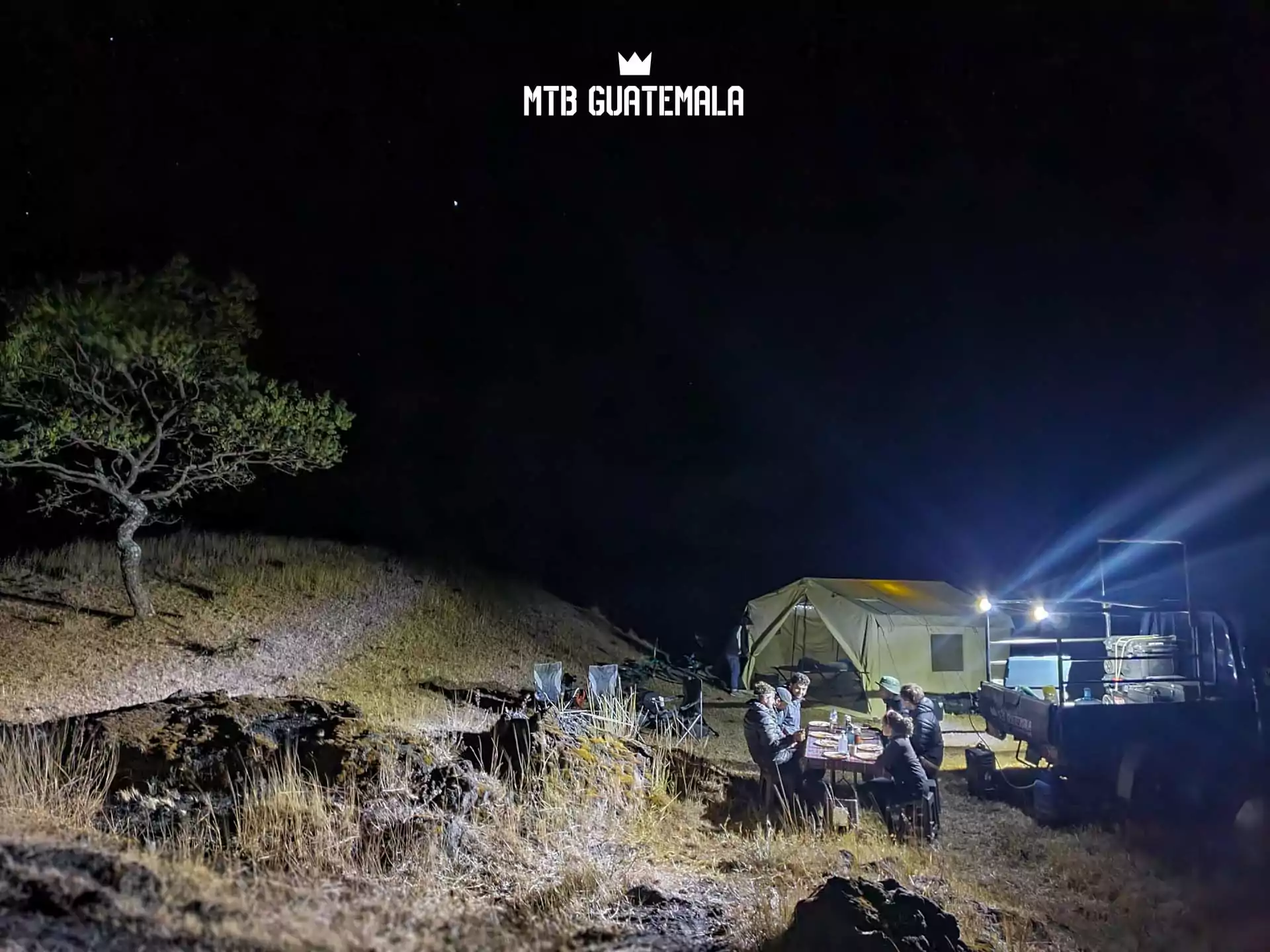
Each night we’d finish at basecamp, setup on a cattle rancher’s farm at the edge of the lava for a hot meal and share stories.








The last Chapter: Kilian Bron Fuego
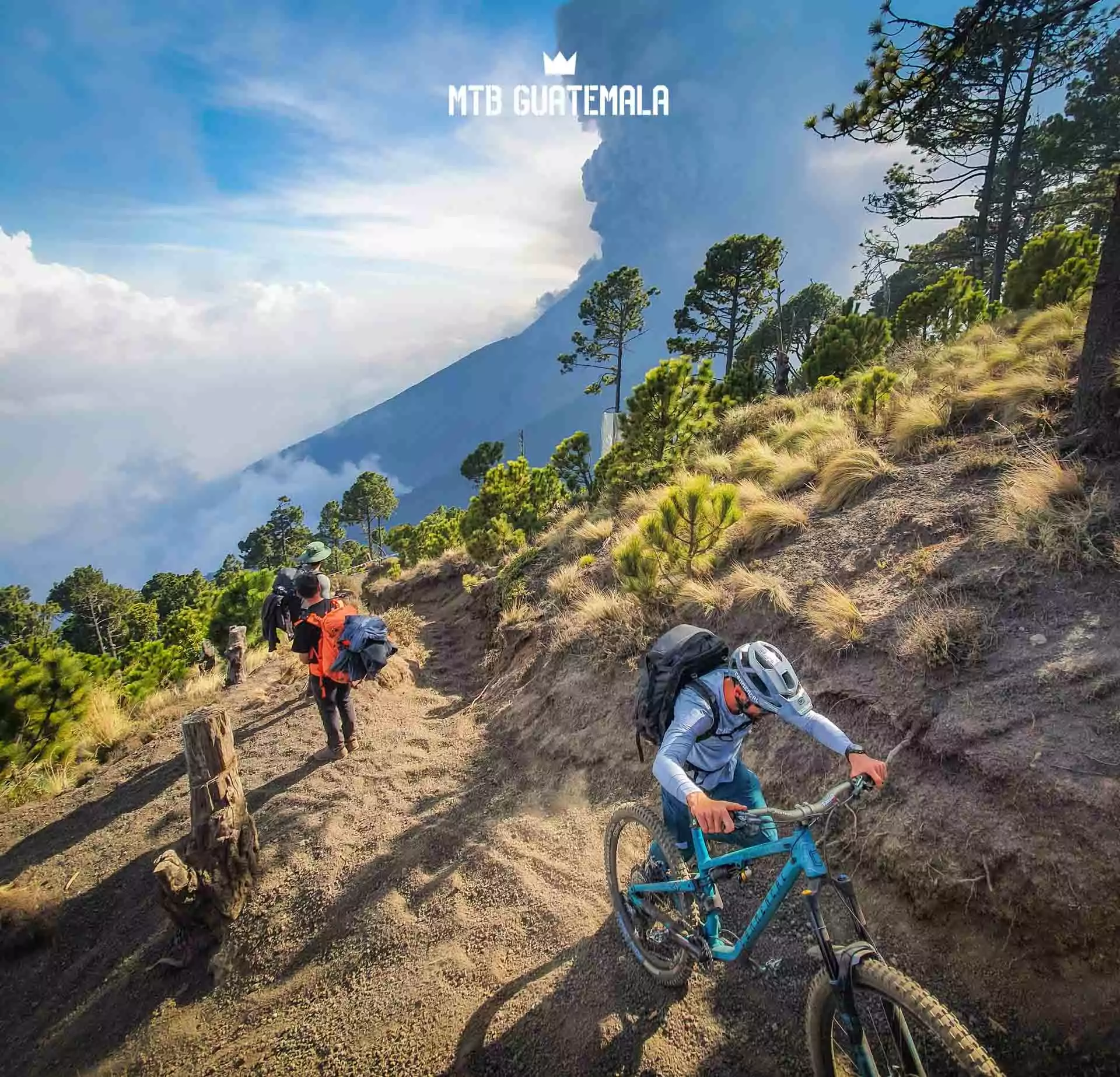
Behind the Scenes: Mountain biking the Fuego Volcano in Guatemala
We prepared the porters at the base of Acatenango for what would be 3 days on the volcano. The plan was to make base camp at 3400m and get as close as we could to the neighboring Fuego volcano, one of the most active volcanoes in the world.
Due to recent restrictions, we brought the bikes up through private property and carried them through the national park portion on Acatenango Volcano. Working with the local communities, we ensured all permissions were granted for the film project.
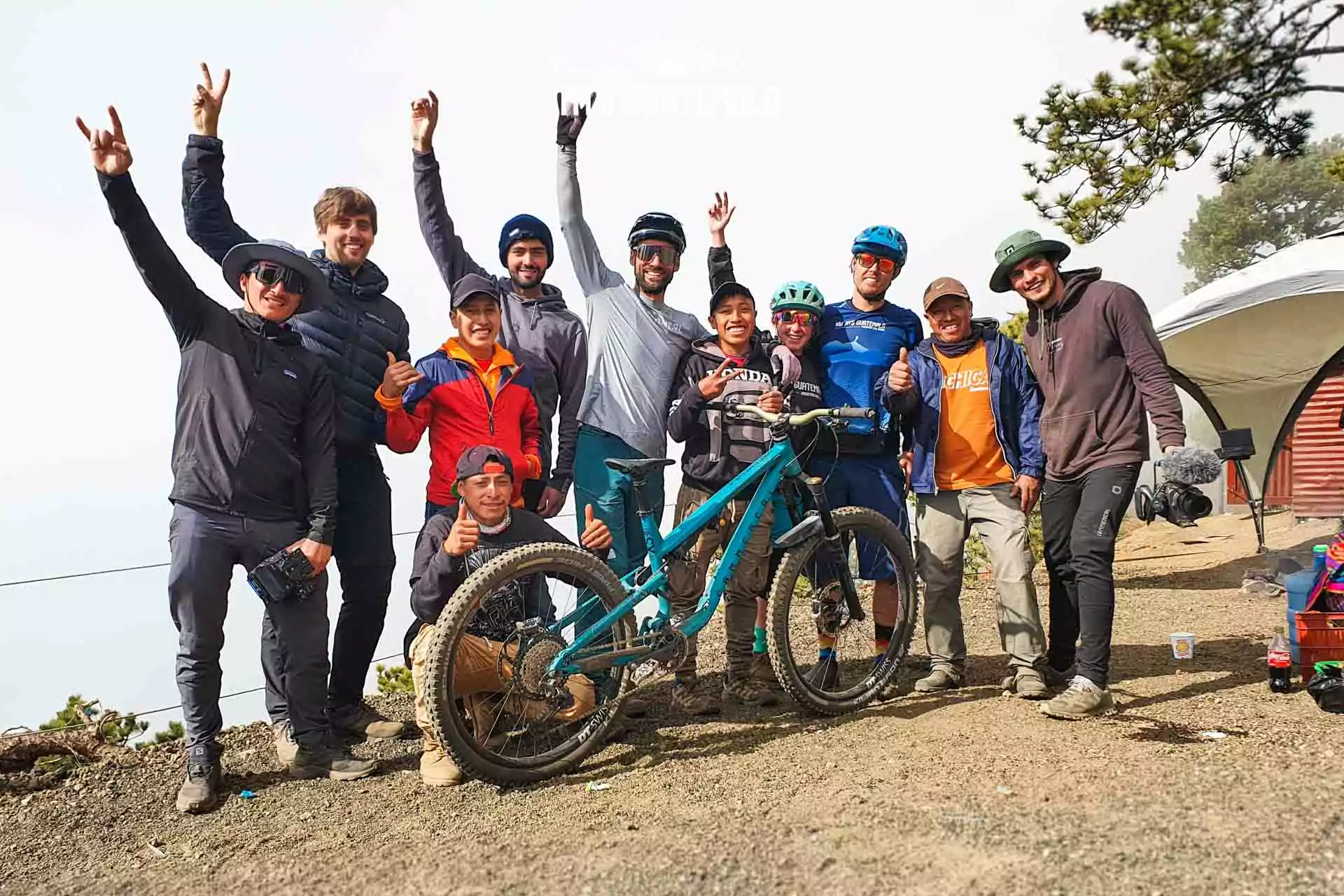
Volcán de Fuego: A mountain on fire
Upon arriving at our campsite, we bore witness to the largest eruption that Fuego had let off in years. A pillowing bloom of smoke stretched from the cone to the stratosphere, shooting hot ash and gas. It was an eruption like this in 2018 that created a large landslide on the southern side of the volcano, wiping out 3 towns and killing close to a thousand people.
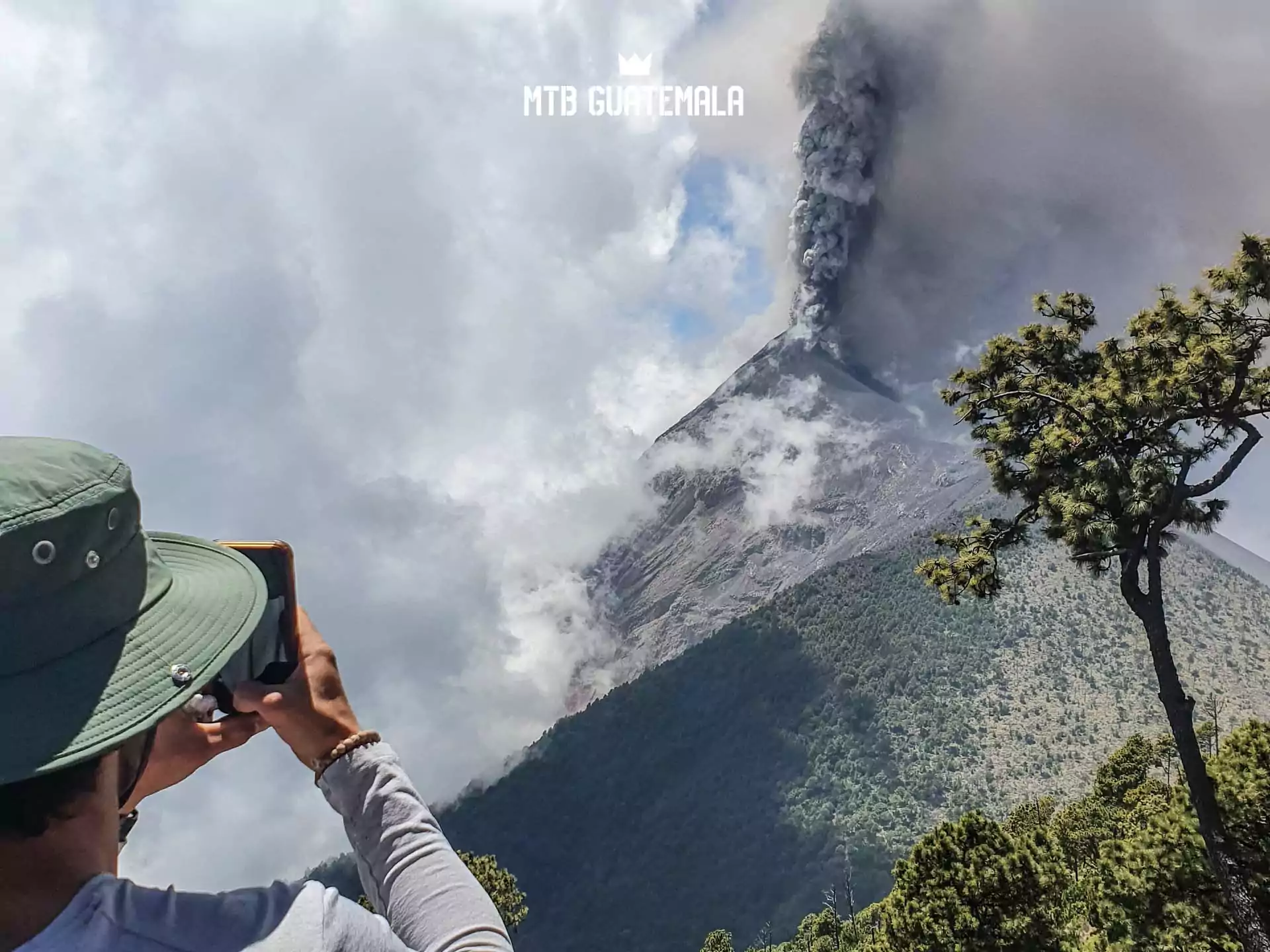
We got notice of the evacuation orders from the base below. No one was allowed to climb the Acatenango Volcano until the eruptions settled down. As far as Kilian, the film team and us, none were getting close to the Fuego Volcano anytime soon.
Part of what made the Kilian Bron Fuego project interesting, is that the film team would only shoot at the early hours of the morning, for sunset and at night. We fell into a rhythm of exploring locations during the light hours, sleeping in the afternoon and then staying up most of the night getting footage from sunset on. The results after 7 days was an exhausted team.









As the eruptions grew more intense, and we had a clearer view of Fuego, the film crew left for the volcanic slopes of Acatenango a steep 400m push to the summit for drone shots and hopes to catch some photos of Kilian Bron riding with the eruption of Fuego behind. The team and I stayed at camp, preparing dinner and waiting for their return. Later on that night when they didn’t come back, I climbed up to the summit of Acatenango in the dark looking for them.
At night at 4000m in Guatemala the temperatures are sub zero. The atmosphere is thin and clear and the milky way shines. I came upon the team about 3am, bivyed in the summit cater of Acatenango. The 5 men were taking turns sharing 2 sleeping bags huddled in a small tent as the wind whipped outside.
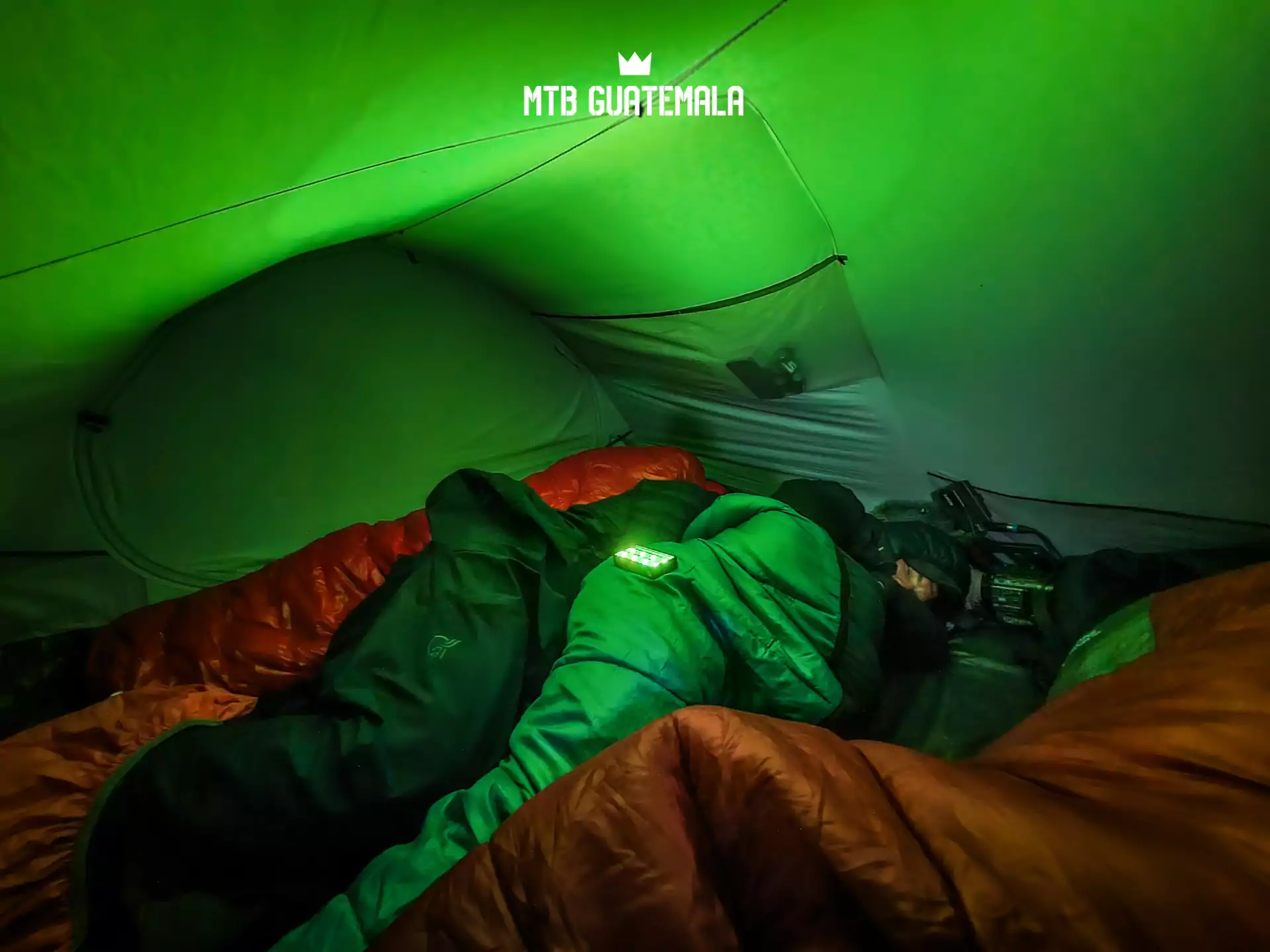
I had brought them food, but no one was interested in eating. Everyone suffered that night on Acatenango.
When the first hues of dawn started to apear on the horizon, me and JP, the photographer, went up to the rim to snap some long exposure shots of the milky way, erupting Fuego and the crew huddled in the tent in the crater. Taking night photos is not easy, as you wait in the cold for the long shutter to close, and we both passed the time there jumping around to stay warm.
Kilian Bron Fuego
I knew the the Fuego ridge from the first photo that I had shared with Kilian was ridable. The problem with the recent eruptions is that no one on the team wanted to get anywhere close to the Fuego volcano, and who could blame them? So on the third day, Kilian and I hiked over to Fuego to check it out.
We were in luck. After over 48hours of constant eruption, Fuego woke up cool and collected on day 3. We made our way down to La Horqueta ,a flat spot of land that connects Acatenango and Fuego, and began hiking up the slopes of the active volcano. Whenever Fuego erupts, the ground rumbles and you feel it in your chest.
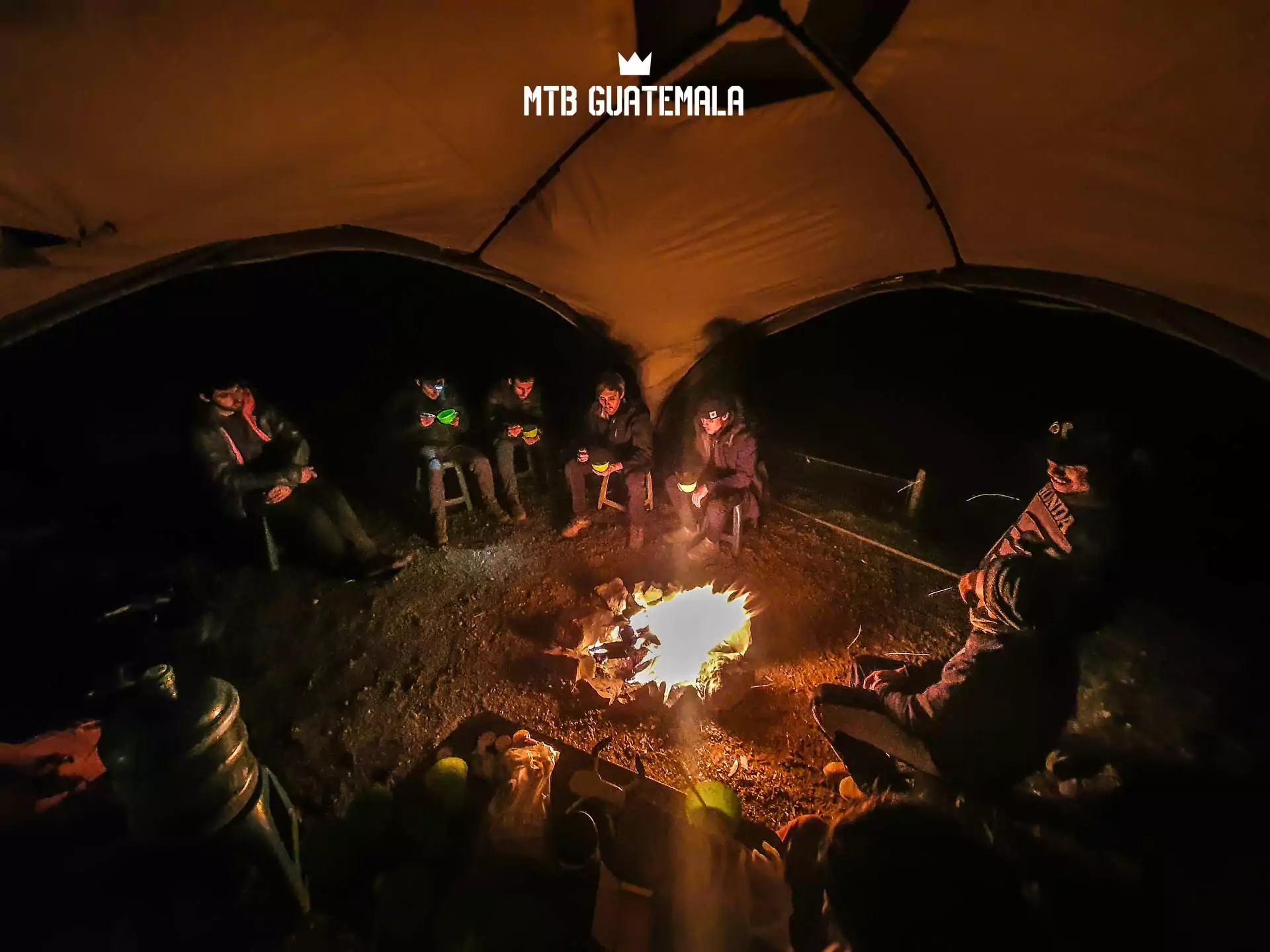
We reached the ridge, one of the only flat areas where you can ride by bike at this altitude precariously perched below the erupting cone. We inched closer to danger, knowing that at any minute we could get trapped in a maelstrom of flaming rocks let off by an eruption. “Lets wait until it erupts then we’ll take a photo” Kilian told me. So we waited, the two of us for any sign of life from the volcano. Our plan was to bike as fast as we could to escape danger, to ride for our lives. My palms were sweating.
Eventually the ground moved and the earth heaved a puff of smoke, the rocks shot to the sky. We snapped the photo and got out of there before there was time for the debris to fall.
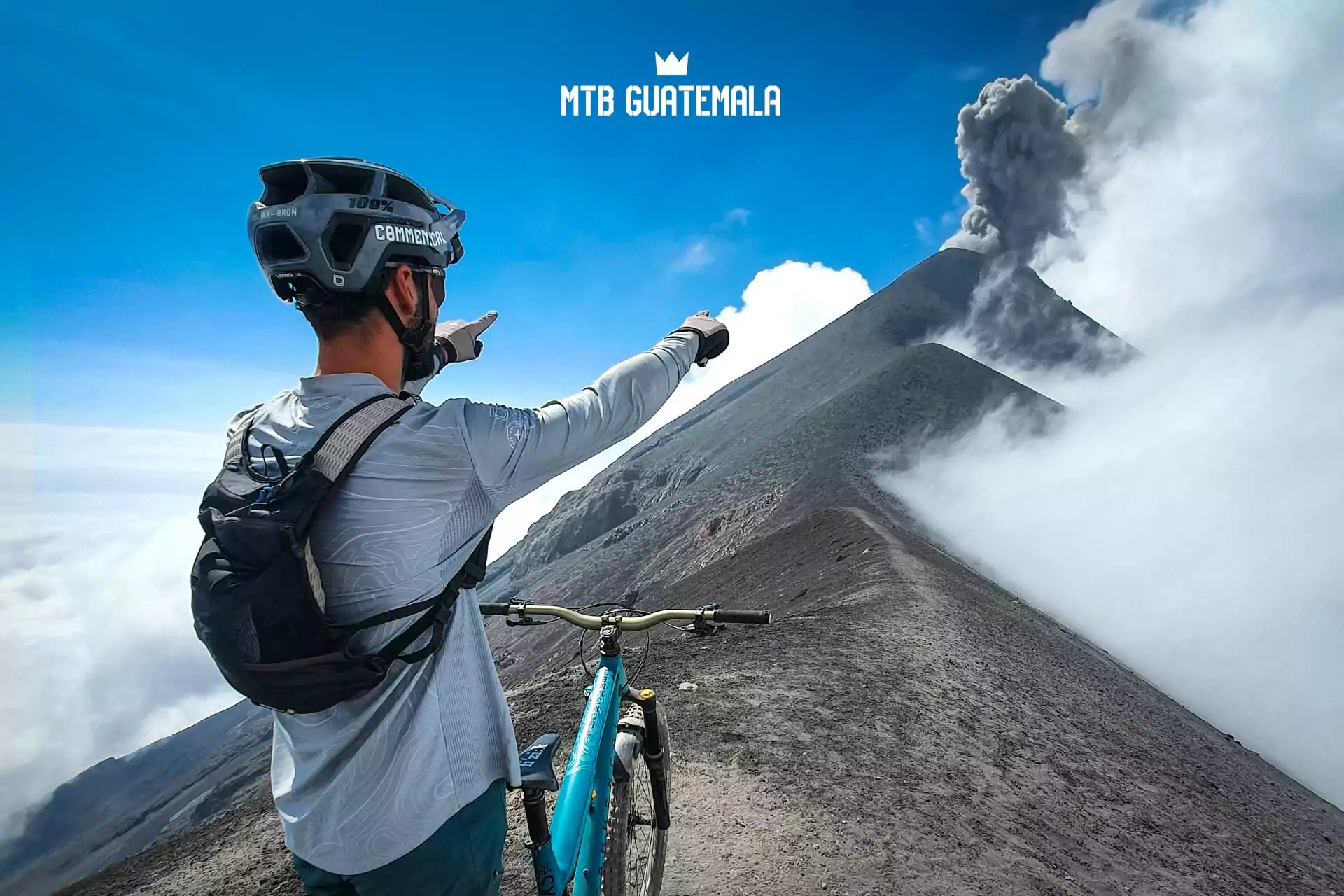
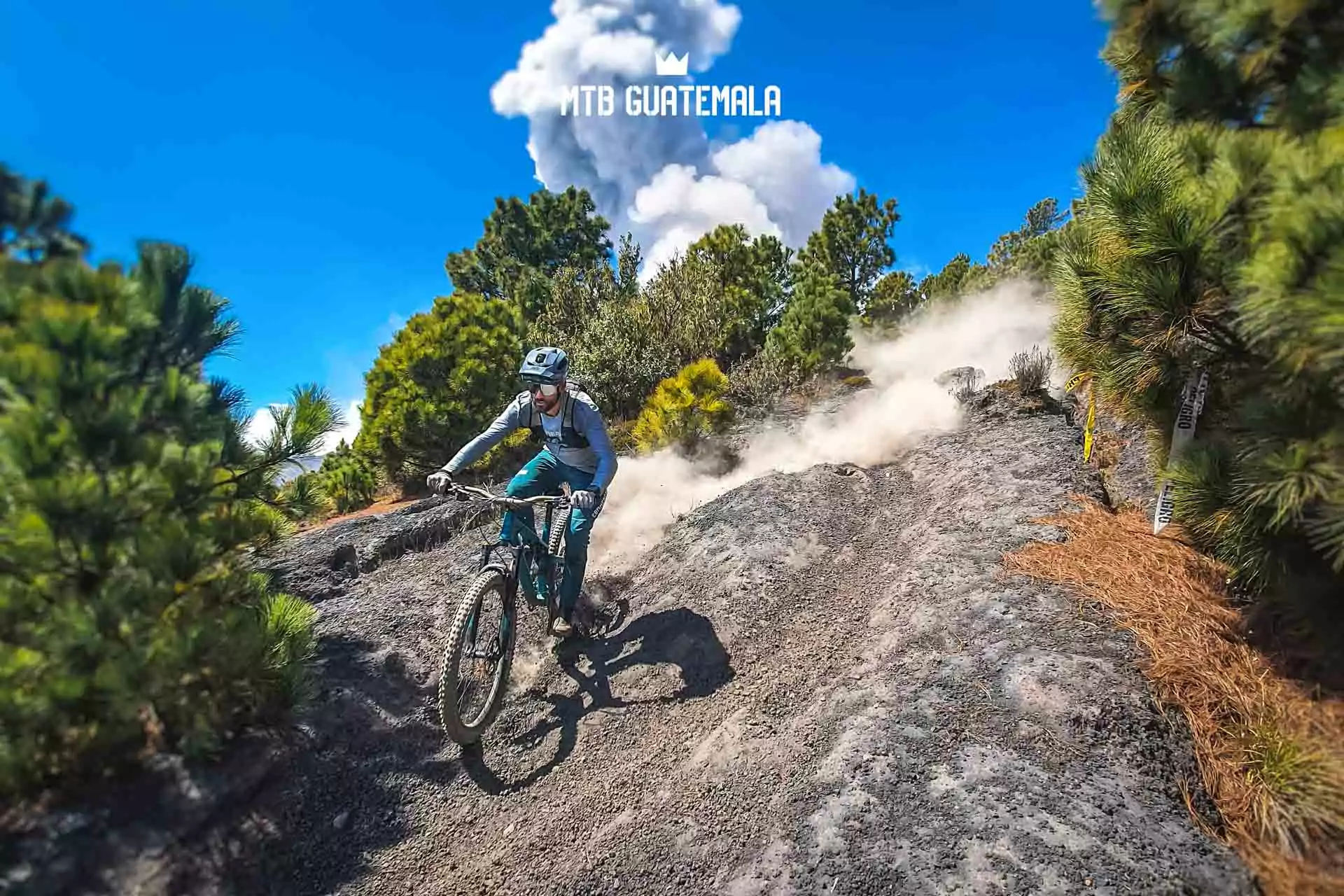
Our 10 days with Kilian Bron Fuego film project pushed the limits of everyone involved. We were all outside our comfort zone. Kilian and the film crew in a new country, my team and I in new terrain and working on new schedules to get the right shots.
In the end, the team got what they wanted: a front row seat to the lives those days on Acatenango. Witnessing an eruption like that is a stirring reminder that our planet is alive with activity. And to witness part of the birth of a new mountains being created right in front of us!
Fuego had permitted us her passage and I got about as close as I would ever want to get, and we were all thankful to be part of this major project.
Comments